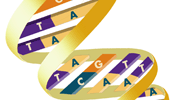- Introduction
- Careers
- Undergraduate Research
- Curriculum
- Admissions
- Contacts
- Advisory Board
- Affiliated Faculty
- News

Curriculum

The study of the nature of life is a multidisciplinary endeavor. The curriculum of the B.S. in Quantitative Biology has been designed to provide students with a solid foundation in biology, chemistry and mathematics, with an emphasis on preparation for a research career in life sciences. Students in the program take core course sequences from all three subject areas, though mathematics, as the cornerstone of all quantitative science, is given particular prominence. The program also features integrative seminars in the spring of the sophomore and junior years. These are designed to stress the interplay between the individual subjects, and they call for hands-on work on small projects that illustrate the nature of multidisciplinary research. Finally, the capstone course leads students to synthesize what they learn during the first three years of study. The expectation is that students will choose to write a senior thesis, thus taking advantage of an opportunity to participate in leading-edge original research of their own.
For course descriptions and other information, check the Handbook for the BS in Quantitative Biology. You can also download a PDF file with the curriculum for the major.
The math courses required for the major lie at the core of many applied mathematics areas which have very strong ties to biological and biomedical research. Students in this program will begin with a three-semester calculus sequence to lay the foundations of continuum mathematics, and one discrete mathematics course. The first semester calculus course will be offered with a specially designated section in which the examples and motivations will be drawn from applications in biology. At the same time, students will take an introductory sequence in biology and a sequence in general chemistry. Following this foundation, students will take a mid-level pair of courses in linear algebra, which is essential for exact discrete descriptions and for approximations of first resort in most continuum applications of mathematics, and in ordinary differential equations. Concurrently, students will typically take a sequence in organic chemistry and a choice of core courses in ecology, general physiology, cell physiology, molecular biology of the cell, or genetic and evolutionary biology. The final four required math courses are meant to be taken in the junior year. The first of these is an introduction to numerical analysis and scientific computing based on mathematical analysis and programming in MATLAB, a ubiquitous, user-friendly but industrial-strength environment for scientific computation. The second math course of the junior year is an introduction to partial differential equations, for modeling of fundamental continuous space-time phenomena such as diffusion, advection, and steady states. The third and fourth math courses of the junior year are in probability and statistics. The junior year also continues the training in science with an introduction to biochemistry, an additional core biology course, and a sequence of two physics courses. During the senior year, students will take a capstone course in which a synthesis of the material in the various science and math courses is the main focus. Students are also very strongly encouraged to work on research during their senior year, in preparation for a senior thesis to be written under the supervision of faculty in two disciplines: Math and biology.
Many other elective courses are available that can either enhance technical skills, the integration of different disciplines, or both.
